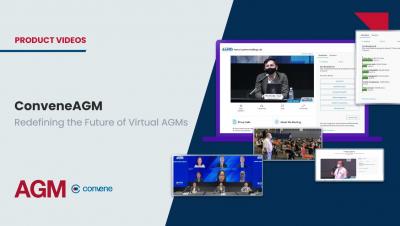Teams | Collaboration | Customer Service | Project Management
Convene
Designing Your Hybrid Workplace: Things to Consider
In today’s definition, a workplace is no longer a place. Most people realized they could work literally anywhere — office, coffee shop, home. Organizations and companies worldwide have turned to remote working for some time now. With the onset and offset of multiple lockdowns in many countries, there is a need to implement a hybrid workplace to adapt to the demanding conditions of today’s work setup.
What Hybrid Workplace Setup is the Right One for You?
As we continuously make our way towards a post-pandemic world, adapting to the new normal is necessary. Speaking of new normal, one big trend we are seeing in the workplace is going hybrid. In fact, some organizations consider going hybrid as the future of work. Going hybrid means establishing a work setup that involves both working in the office and elsewhere, usually at home.
What are Annual General Meetings (AGMs)?
Companies and organizations are obliged to hold annual general meetings to discuss matters with board members and shareholders. Conducting these meetings must be prepared and facilitated properly, as there are legal consequences at stake. But what exactly are annual general meetings? How should companies administer these meetings?
What is a Board Books Software?
From nonprofits to corporations, the use of board book software is quickly becoming the norm. In the past, the preparation of board books was one of those activities that took up a ridiculous amount of time and effort disproportionate to the value it was adding.
How are Electronic Board Books Useful?
Developments in technology have led board members and corporate secretaries to look into solutions that compensate for their tedious work schedules. Amidst initial apprehensions, leaders are now starting to warm themselves to the idea that digitizing board books present significant benefits to their respective companies. It has now become the norm for businesses – ranging from nonprofits to corporations – to adopt electronic board books for their meetings.
What are the Characteristics of an Effective Hybrid Workplace?
Remote work has been on the rise since the abrupt transition from physical to virtual workplace because of the COVID-19 pandemic. Organizations and companies have seen the need to adapt to the virtual setup to continue their operations. With an effective hybrid workplace, the quality of work and the team’s engagement could be maintained in the post-pandemic.
Azeus Systems Annual General Meeting (AGM) 2021 Highlights
Shield Life Limited - Convene Success Story
Video Conferencing Problems Faced by Directors and Administrators
“Where should I find the link to my next video conference? Did the administrator send it to my email?” A line like this resonates with the overlooked plights most directors and administrators have in this age of video conferencing. Because of the effects of the COVID-19 pandemic, these worries may not be a top priority of organizations. Though these video conferencing problems may be considered trivial, they cause significant nuisances if not promptly addressed.





